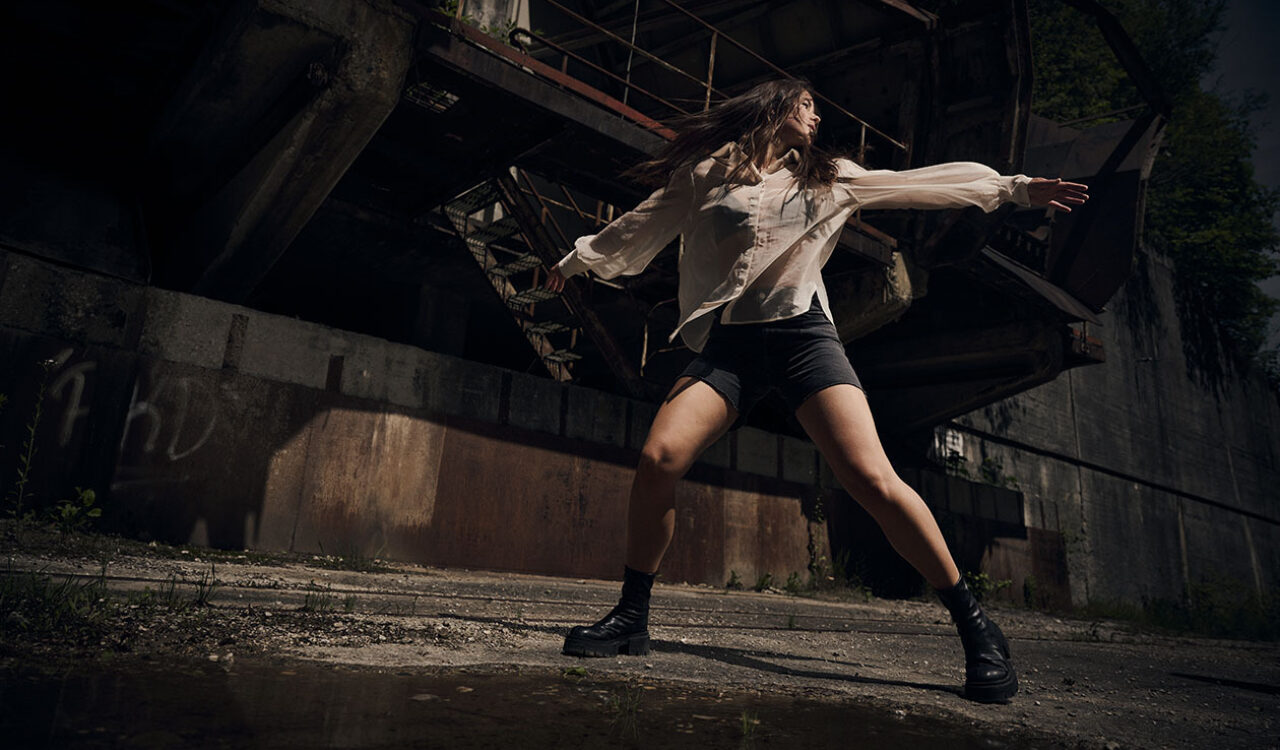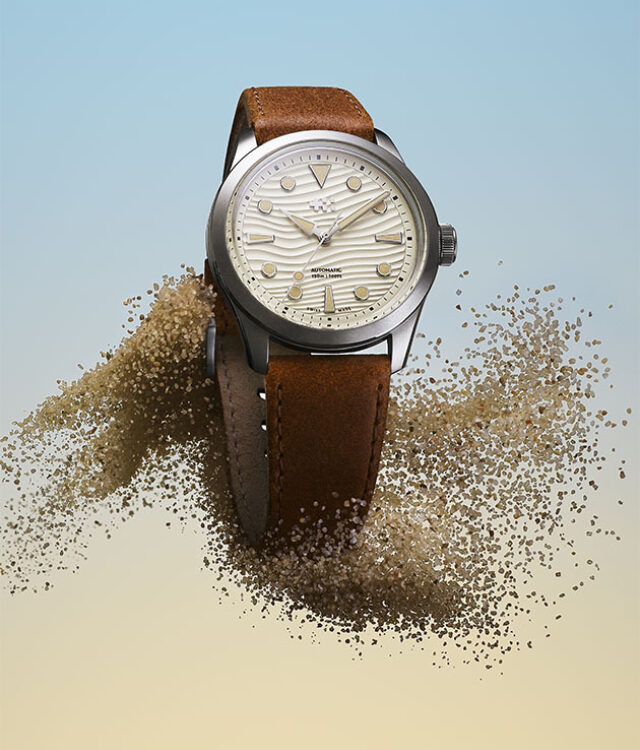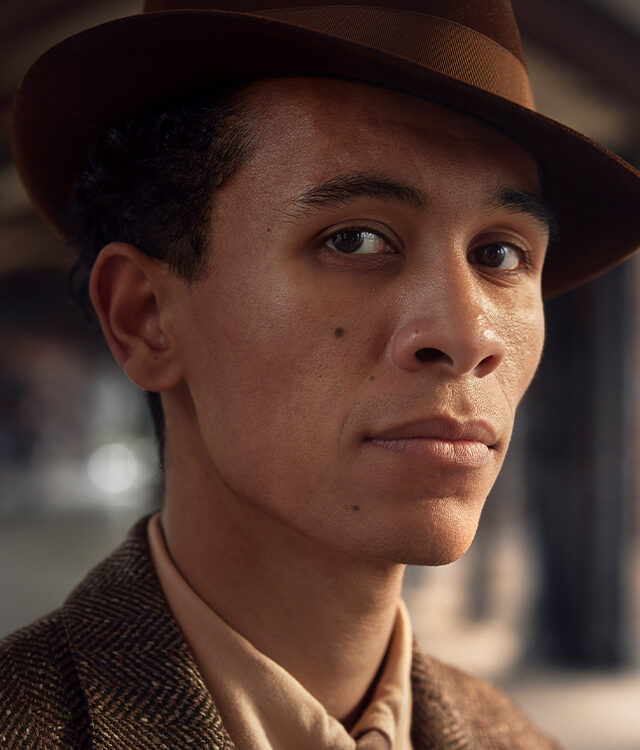
Oceans are vital to human health — they generate half the oxygen we breathe and provide homes for many species that enable us to exist. They regulate our climate and provide valuable food sources too. Humanity depends on our oceans, but instead of looking after this natural resource, we’re slowly killing it.
As a keen diver, based on the island of Guernsey, ocean pollution is a subject I feel very strongly about. So when I was approached by a local charity to create eye catching photographs for an awareness campaign, I was eager to help. The Karl Taylor Photography team dedicated a weeks’ worth of time to the project, conceptualising and creating images that were made using thousands of pieces of litter collected from just 2km of the coastline over the past month.
The amount of litter was astounding — from plastic bottles to fishing gear, shoes to medical equipment — and marine biologist Richard Lord explained the litter was indicative of a much wider problem.
“The ultimate problem is that this plastic is accumulating in the environment and has nowhere to go, so we’ve got to stop increasing the amount that we keep adding,” he said.
When Richard first approached me my initial thought was that with many environmental images out there, unless they contain an element of shock, they are easily overlooked. The message had to be clear and it had to be strong.
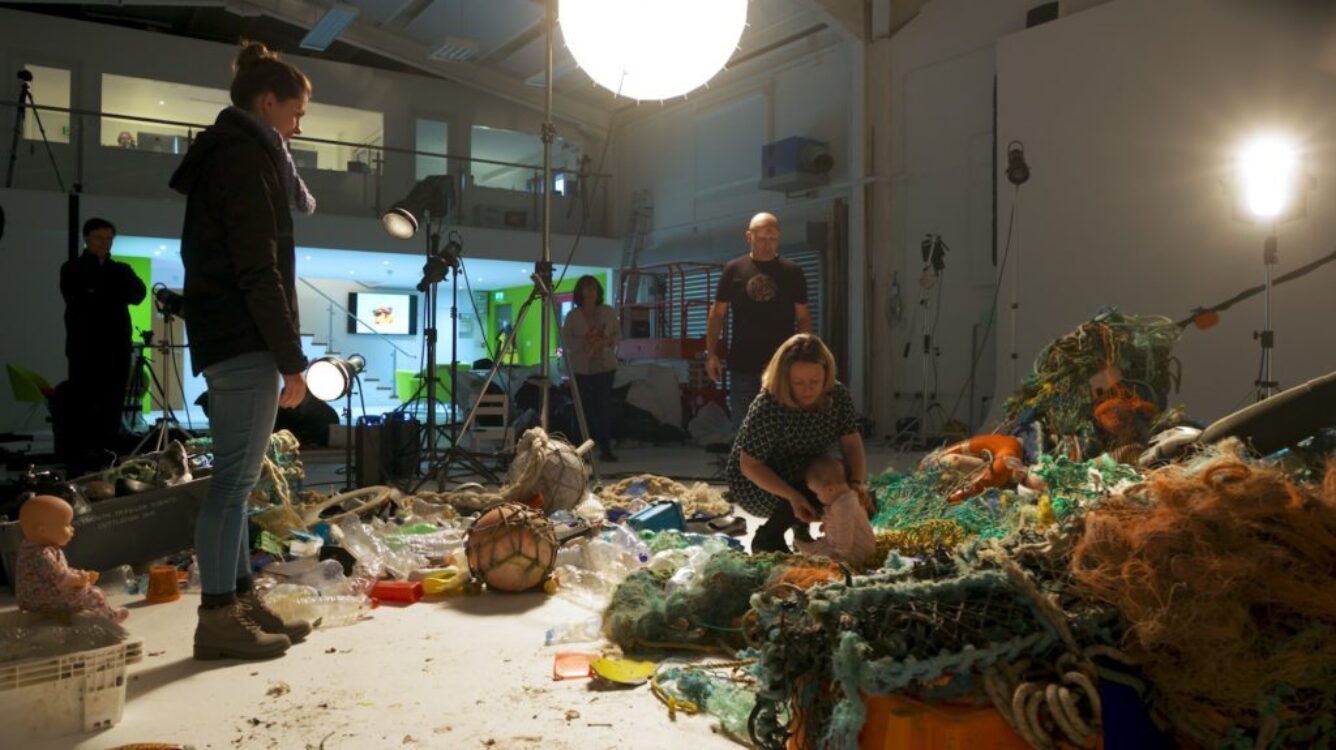
Thousands of pieces of litter collected by volunteers were delivered to the studio.
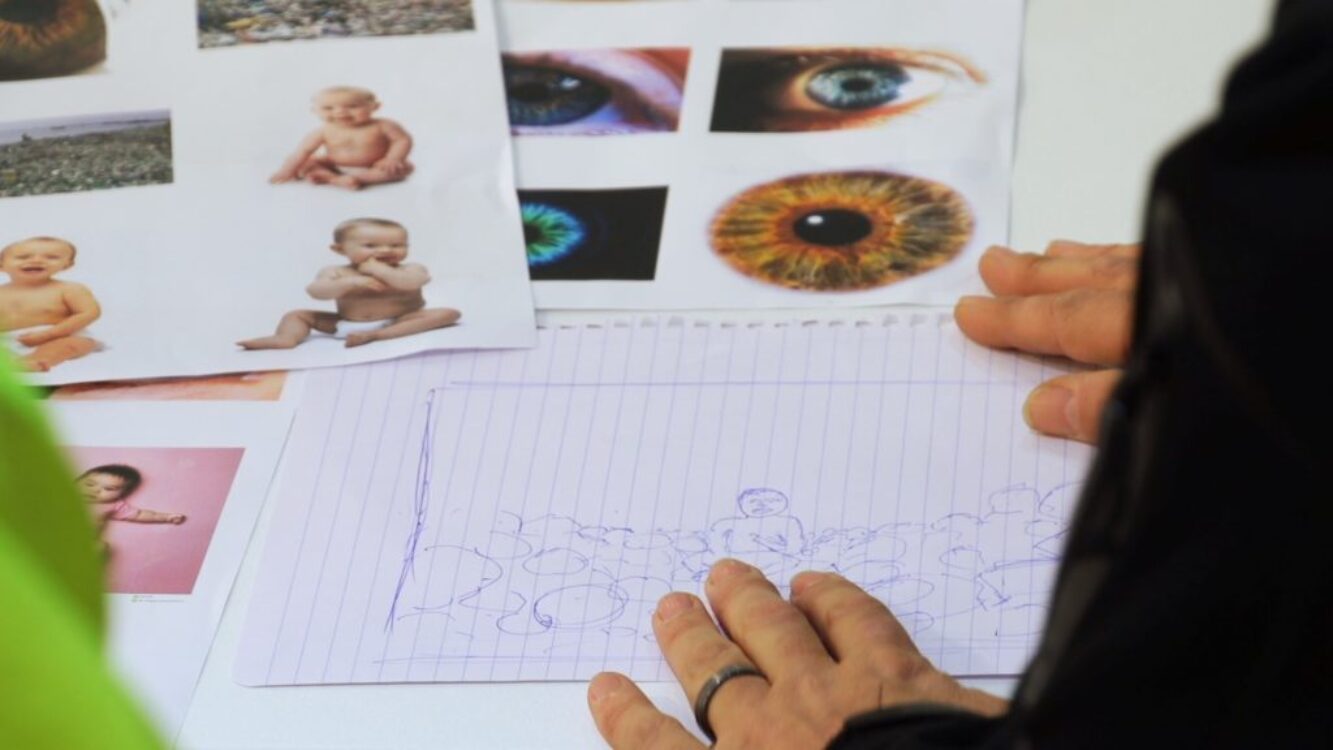
My previsualization sketches of the first image, of the baby sat in the valley of rubbish.
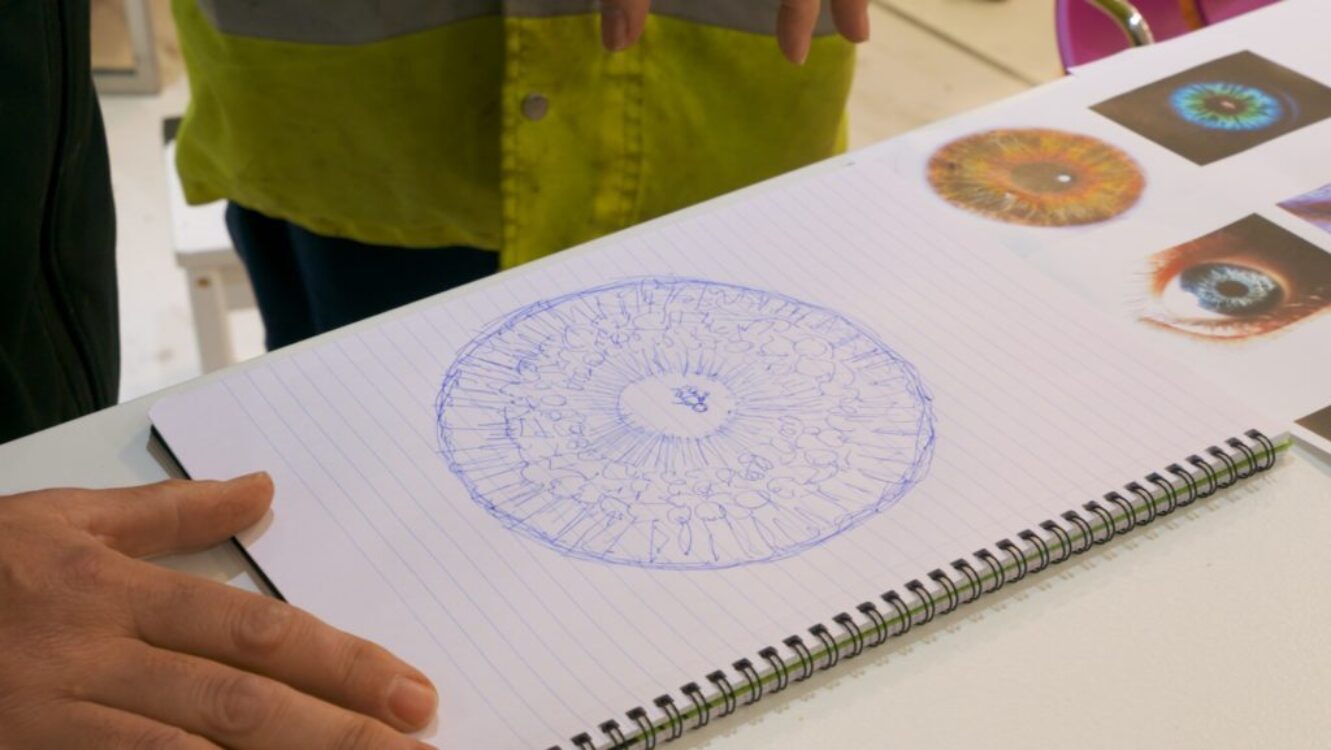
The second image required careful examination of the human eye before we could start shooting.
I started by asking myself what does plastic affect? The answer I came to was us, our children and our future. As humans and parents our children are one of the most important things and we only want the very best for their future. I knew that I had to include something that would grab peoples attention.
Having spoken at length to Richard about the problem I knew that one of the items that frequently washed up on shore was syringes and as a parent myself, I knew that this was always a concern when taking your children to the beach. So, I decided to put the two together as this would create a real talking point and add some controversy, which is exactly what is needed to raise awareness.
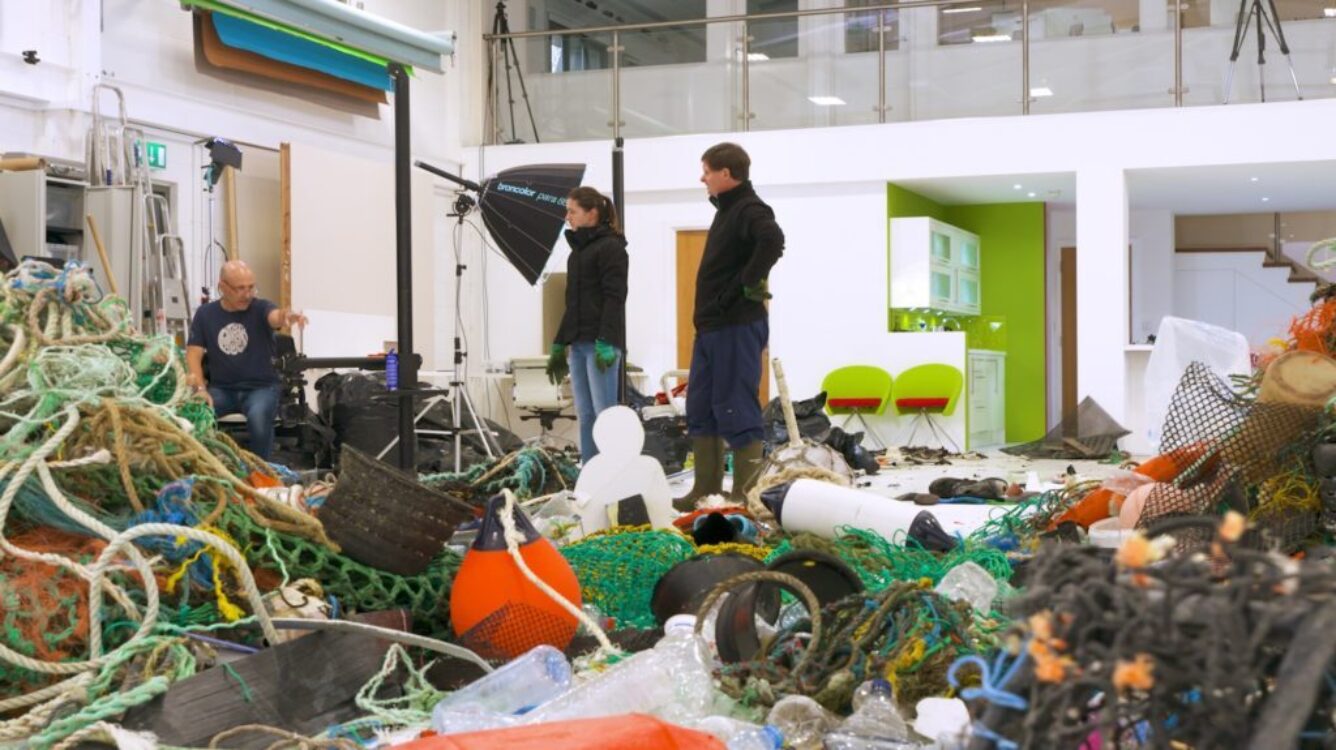
Initial setup for the first image.
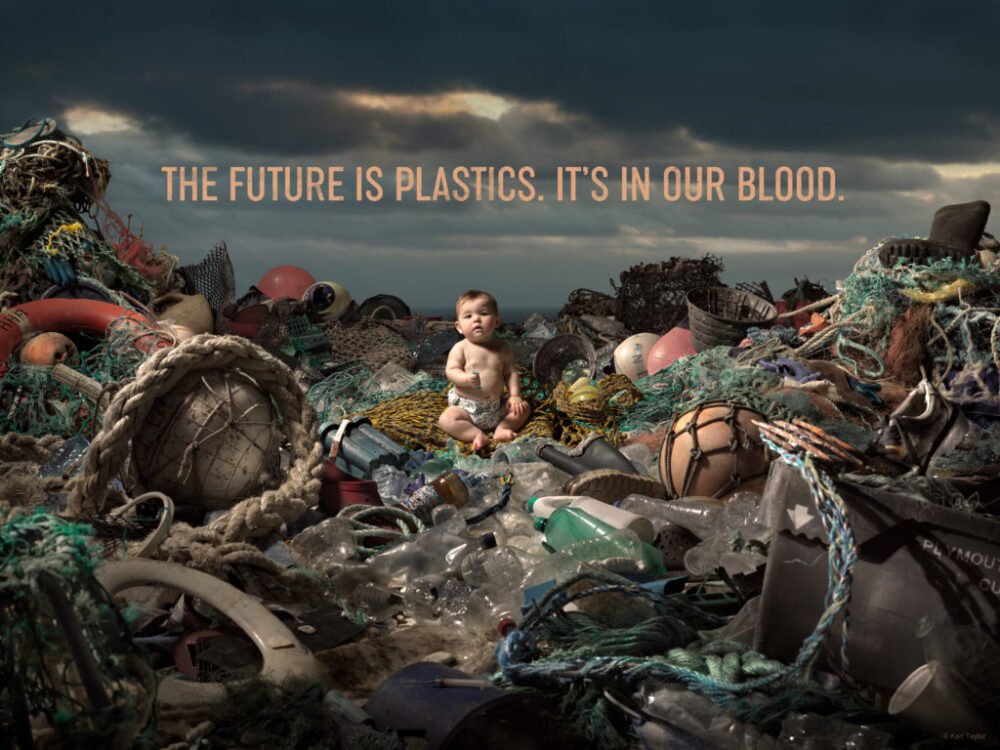
The first image for the ocean pollution shoot, with the baby sat in the valley of rubbish.
With that decided, I needed to think about the rest of the shot. Initially I wanted to go for a straightforward studio shot, but to emphasise the link to the ocean I changed that and decided to do a composite image and incorporate one of my own seascape images as the background.
I envisaged the baby sat in a valley of litter, holding a syringe. But photographing that amount of clutter is extremely difficult and I knew my styling and post production work would have to be perfect in order to guide the eye to the message. I did this through meticulous styling of the shot and precise post production work, burning, dodging and re-coloring, to guide your eye to the focus point and hold you in the picture.
Of course there was no way we would risk the welfare of a baby so the needle was added during post production and the syringe was sterilised before the shoot.
The mother was also just a few feet away to the left, with a clear path to the baby carefully hidden behind the debris.
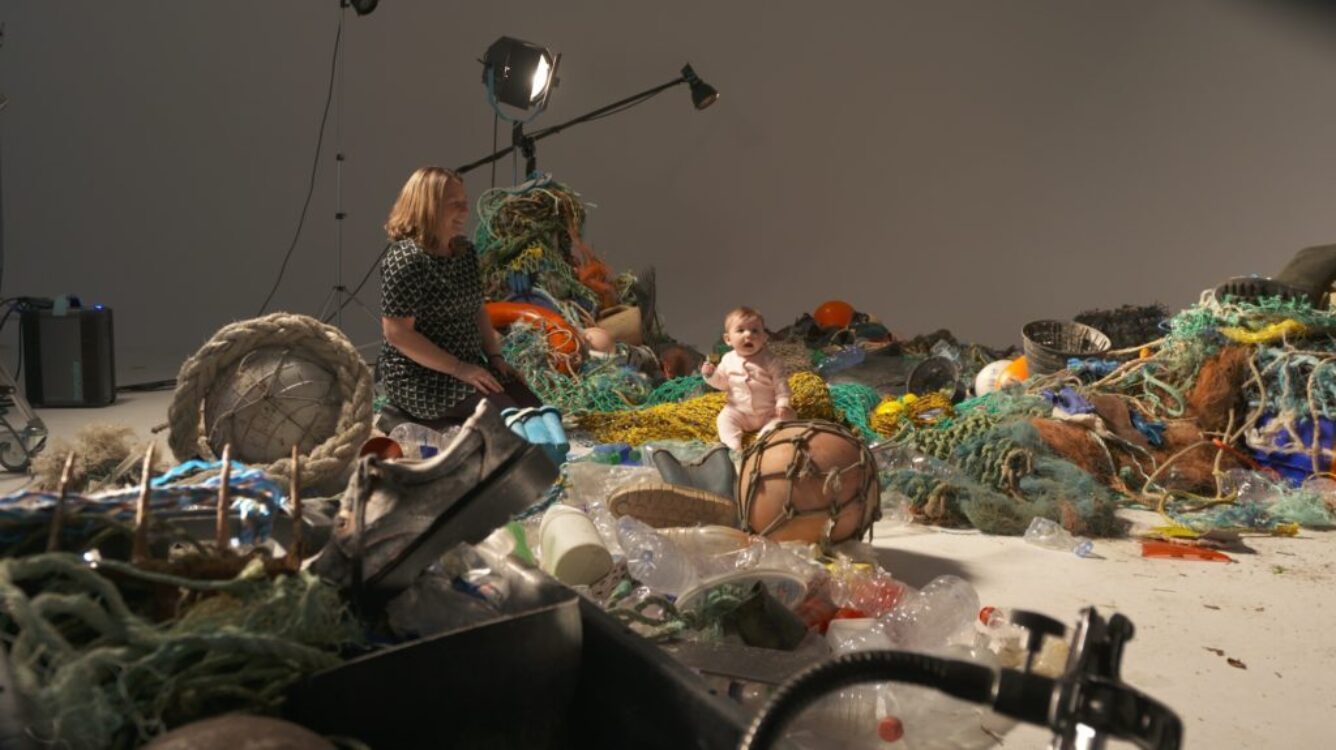
The baby’s mother was on hand at all times.
For the second image Richard wanted an overhead shot to show the scale and quantity of the items collected. Again I felt that including a baby would create a stronger message, playing on the concept of our future. Thinking about concepts that related to the future, health and what we choose to ignore, I decided on an eye.
A great deal of planning was needed to create this image. I needed to study the human eye, examine dimensions, coloration and form. With my Hasselblad secured to the studio ceiling, we marked out an eye that was 5.6m in diameter and used the litter to create the pupil, iris, limbal ring and eyelid (the baby would be placed in the centre of the pupil to create the catchlight).
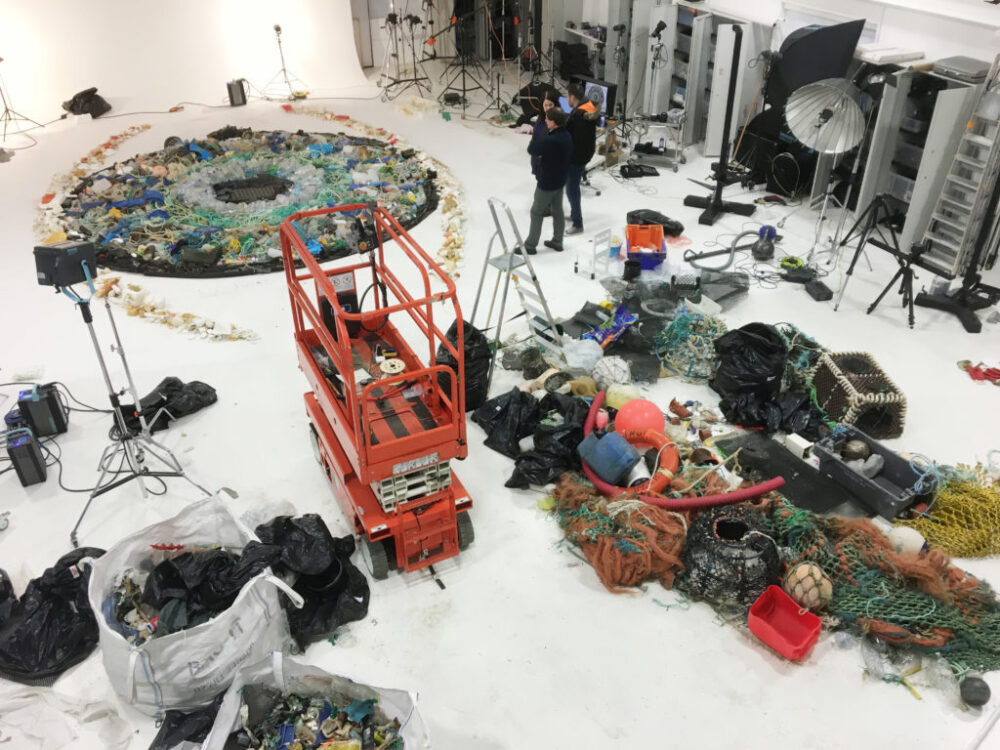
A combination of materials were used to create the eye, the second image of the campaign.
Initially I hadn’t planned to create anything other than the eye but it was Tim, our cameraman’s idea, to create the eyelid using polystyrene, a form of litter that washed up regularly but that we hadn’t yet included in any of the shots.
The cleanup involved more than just the removal of all the litter.
My hope was that by assisting with this campaign, by creating eye catching and thought provoking images, we could circulate the images to a wider audience and help raise awareness and encourage people to become a part of the solution.
Once the shoot was complete, all the items were sorted and sent for recycling.
Plastics are one of the main sources of ocean pollution, with scientists estimating that of the 380 million tons of plastic generated globally each year, 8 million tons of that enters our oceans (80 per cent of which originates from land-based sources such as rivers). That is equivalent to dumping one garbage truck worth of plastics into the ocean every minute. The consequences of that are dire.
Plastics are choking our oceans and killing its inhabitants, either through ingestion, entanglement or chemical contamination. Instead of decaying over time, plastics break down into smaller and smaller pieces called microplastics. Items of all sizes are finding their way into the stomachs of creatures that mistake it for food and are now entering every level of the ocean food chain — from phytoplankton to fish, whales and even humans.
Richard suggested a two-part solution to this. Education, he said, was key. We need to educate people that casual use and disposal of plastics needs to stop. If we continue to use plastics at the current rate scientists predict that by 2050 there will be more plastic in our oceans than fish.
The second part of the solution was more long term, he said. Plastics have become an integral part of our lifestyles but it is imperative that we find alternatives. Although we’re making more of an effort to reduce our plastic consumption and clean up our beaches, we need to put more pressure on politicians and industries to stop the problem at its source.
If you’d like to learn more about ocean pollution and become part of the solution, the links below provide valuable information and resources:
- https://www.mcsuk.org/get-active/
- http://justoneocean.org/
- https://www.lonelywhale.org/
- https://www.greenpeace.org/usa/
- https://4ocean.com/
- https://friendsoftheearth.uk/plastics
- https://www.plasticpollutioncoalition.org/
This story of Karl Taylor`s “Ocean pollution awareness campaign” was originally posted on https://www.karltayloreducation.com/ocean-pollution-awareness-campaign/
ABOUT Karl Taylor
Karl Taylor is a professional photographer with over 20 years experience. He is frequently commissioned by leading global companies for his precise attention to detail and his exquisite control of light.
His work covers advertising, beauty and fashion photography and he has worked on major campaigns for commercial clients such as Specsavers, Hugo Boss, Heineken, Virgin and the BBC, to name just a few.
Karl is also known for his ability to explain complex subjects extremely clearly. His unique way of teaching and clear instruction has led him to present for Hasselblad Camera Company, Broncolor Lighting and Adobe as well as guest appearances on the BBC.






